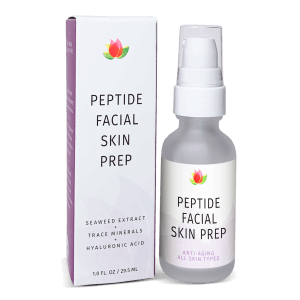Natural, Reviva Labs, Skin Care
Hydration vs. Moisture – What’s the Difference and Which Do You Need
When it comes to skincare, we often hear the terms “hydration” and “moisture” being used interchangeably. However, these two concepts are distinct and play different roles in maintaining the health and appearance of our skin. Understanding the difference between hydration and moisture is crucial in choosing the right products and creating an effective skincare routine. Let’s explore the distinction between hydration and moisture and what your skin needs for each condition.
Hydration
Hydration refers to the process of replenishing the water content in our skin. It involves attracting and retaining moisture to keep the skin cells plump, supple, and functioning optimally. Hydration is essential for all skin types, regardless of whether you have dry, oily, or combination skin.
Humectants are key players in the hydration game. These ingredients have the ability to attract and bind water molecules, drawing moisture from the environment or deeper layers of the skin to the outermost layer, known as the epidermis. Humectants act as water magnets, ensuring that the skin remains adequately hydrated. Some examples of common humectants include:
- Panthenol
- Sorbitol
- Alpha hydroxy acids (AHAs)
These humectants work by pulling water into the skin and preventing excessive evaporation, which can lead to dryness and dehydration. By incorporating products containing humectants into your skincare routine, you can provide your skin with the hydration it needs to maintain its healthy and vibrant appearance.
Signs Your Skin Needs Hydration
It’s important to be able to identify the signs that your skin is in need of hydration. Dehydrated skin often looks dull, feels tight, and lacks elasticity. If you notice any of these signs, it’s time to give your skin a hydration boost.
Moisture
While hydration focuses on replenishing water content, moisture is all about preventing water loss from the skin. Moisturizing ingredients, such as emollients, work by creating a barrier on the skin’s surface, sealing in the hydration and preventing moisture from evaporating.
Emollients are ingredients that help to soften and smooth the skin by filling in the gaps between skin cells. They work by lubricating the skin’s surface, improving its texture, and enhancing its overall appearance. Emollients are particularly beneficial for those with dry or rough skin. Some examples of emollients commonly found in skincare products include:
- Fatty acids
- Cocoa butter
- Seed oils (e.g., jojoba oil, rosehip oil)
By incorporating emollients into your skincare routine, you can nourish and moisturize your skin, leaving it feeling soft, supple, and rejuvenated.
Signs Your Skin Needs Moisture
Just like with hydration, there are signs that indicate your skin is in need of moisture. Dry skin often appears flaky, rough, and may even feel itchy or irritated. If you notice any of these symptoms, it’s time to give your skin a dose of moisturizing goodness.
Understanding Your Skin’s Needs: Dry vs. Dehydrated
To determine whether your skin needs hydration or moisture, it’s important to understand the difference between dry and dehydrated skin. While these terms are often used interchangeably, they have distinct characteristics and require different approaches to skincare.
Dry Skin: Lacking Oil
Dry skin is a skin type characterized by a lack of natural oils or lipids. It often feels tight, rough, and may be prone to flaking or itching. Dry skin requires moisturizing products that provide nourishment and restore the skin’s lipid barrier.
For those with dry skin, it’s recommended to use moisturizers that contain a combination of humectants, emollients, and occlusives. This ensures that the skin receives both hydration and moisture, addressing its specific needs.
Dehydrated Skin: Lacking Water
Dehydrated skin, on the other hand, lacks water rather than oil. It can occur in any skin type, even oily skin, when the skin’s water content becomes imbalanced. Dehydrated skin often appears dull, feels tight, and may show signs of fine lines or wrinkles.
To address dehydrated skin, hydrating products with humectants, such as hyaluronic acid and glycerin, are key. These ingredients attract and retain moisture, helping to restore the skin’s hydration levels and improve its overall appearance.
Choosing the Right Products for Your Skin
Dry Skin – opt for moisturizers that contain a mix of emollients and occlusives. These ingredients will help to nourish and replenish the skin’s natural oils while sealing in moisture. Look for products that contain ingredients like shea butter, cocoa butter, and seed oils, as well as occlusives like petrolatum and mineral oil. These will provide the necessary moisture and protection for your dry skin.
Dehydrated Skin – focus on incorporating products with humectants and hydrating serums into your routine. These ingredients will attract and retain water, helping to restore your skin’s hydration levels. Look for products containing hyaluronic acid, glycerin, and other humectants. Hydrating serums can be applied before moisturizers to provide an extra boost of hydration.
Protect Your Skin from Environmental Factors
External factors, such as harsh weather conditions and pollution, can strip the skin of its moisture. Protect your skin by wearing sunscreen, using barrier creams, and avoiding excessive exposure to the sun and harsh elements.
Follow a Consistent Skincare Routine
Consistency is key when it comes to skincare. Establish a daily routine that includes cleansing, moisturizing, and protecting your skin. Stick to this routine to ensure that your skin receives the hydration and moisture it needs on a regular basis.
By incorporating the right products into your skincare routine and following a consistent regimen, you can ensure that your skin remains well hydrated and moisturized. Remember to listen to your skin’s needs and adjust your routine accordingly. With the right approach, you can achieve the healthy, glowing skin you desire.












